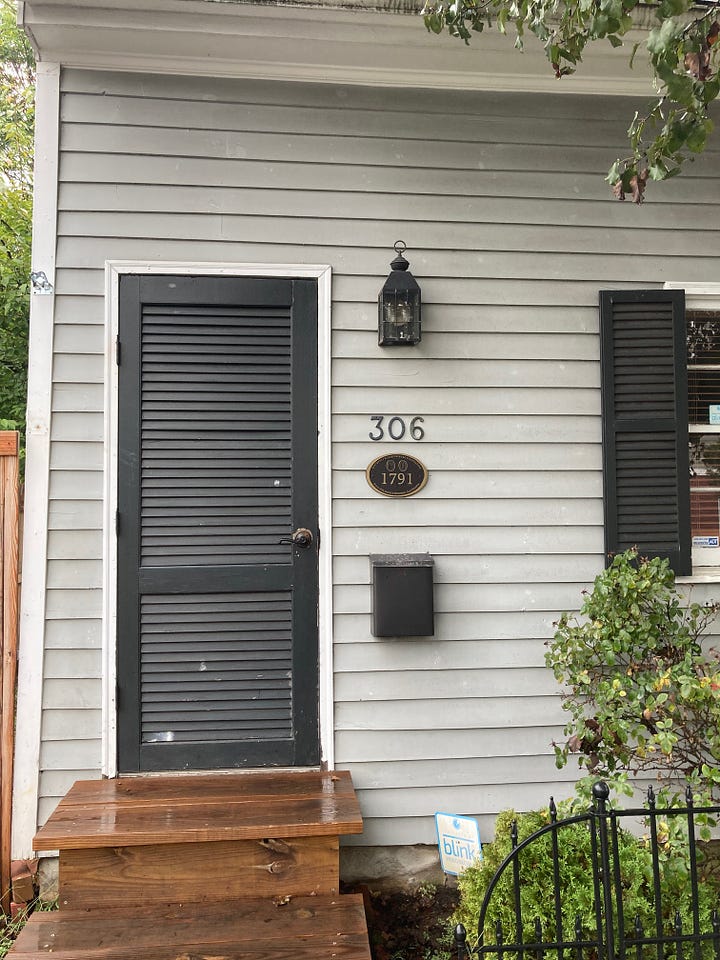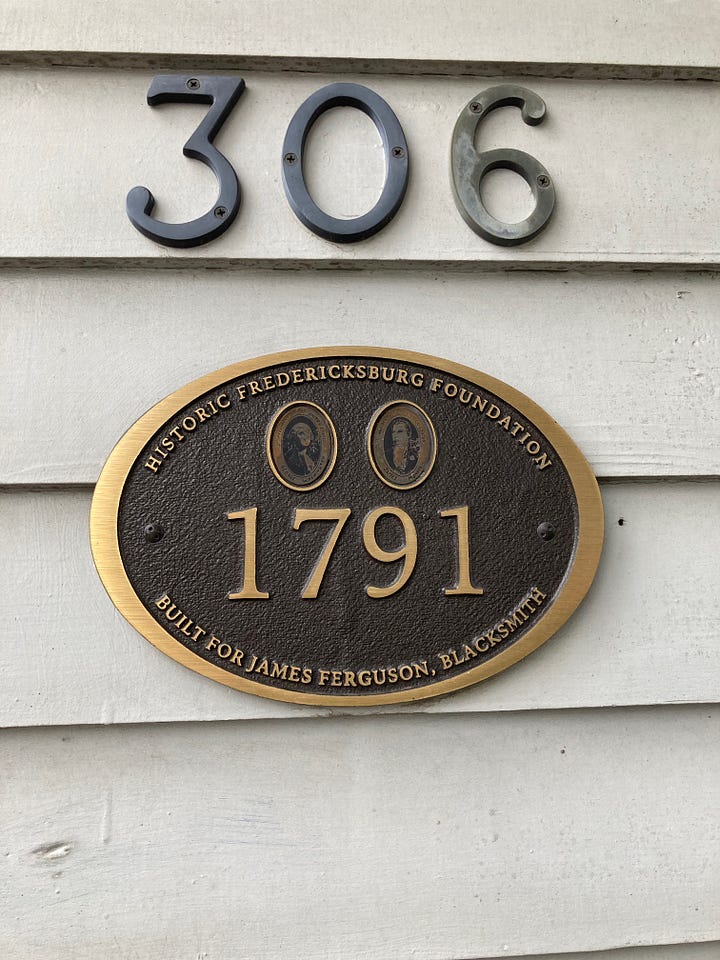History Thursday: 306 Charles Street
House was built in 1791 by James Ferguson, an African American blacksmith.
By Adele Uphaus
MANAGING EDITOR AND CORRESPONDENT


This week we take a look at another house on Charles Street with a history of African American ownership dating to long before the Civil War.
Located on the other side of the train tracks from the pocket neighborhood explored in the last two stories, 306 Charles Street was built in 1791 by James Ferguson. Alternately listed in Fredericksburg historic court records as a “free mulatto” or a “free Negro,” Ferguson had been renting in the area and bought the lot from Phillip Rootes of Gloucester County, according to research prepared by Marvin Dixon in 2006 for the Historic Fredericksburg Foundation’s marker program.
Ferguson was a blacksmith by trade, and the original 12-by-15-foot structure that he built on the lot includes hand-wrought iron nails and a fireplace with a hand-forged iron bar for hanging cooking utensils.
A 1984 archaeological dig at the site revealed a limestone kiln beneath the floor, as well as “many artifacts,” including “spatula-tip nails” that suggest this was the forge Ferguson used for his trade.
Ferguson and his wife had at least seven children, and Ferguson was careful to ensure that they were listed in the city’s official records as being free. In 1815, he swore an oath before the justice of the peace that his daughter Polly Ferguson, “aged about 12 years, is the daughter of his wife who was a free woman,” according to the city’s Free Negro/Slave records.
Ferguson was not only a homeowner and a business owner, but he was a landlord as well, and three of his tenants, according to Dixon’s research, went on to own their own properties nearby.
“It would seem Mr. Ferguson was a man of shared prosperity, who helped others achieve the great American dream of homeownership,” Dixon wrote. “It also seems remarkably rare that this type of homeownership would have occurred without his guidance and counsel.”
On at least one occasion, in 1806, Ferguson was charged with “holding unlawful meetings of Free Negroes & slaves at his house” at 306 Charles Street, the historic court records show.
Ferguson and his descendants owned the house until 1852, when it was sold to George Mullen, a white brickmaker. It was then sold to another African American blacksmith, Lewis Robinson, in 1880.
Other owners have included the Armstrong, Pettus, and Hester families. In 1980, according to Dixon’s research, local preservationists Jack and Gail Edlund bought the property, which was “extremely distressed.” They began a renovation process that included the archaeological dig that revealed Ferguson’s kiln.
“Great care is evident throughout this extensive renovation and great attention to maintaining the historic character of the building is still very evident,” Dixon wrote.

Local Obituaries
To view local obituaries or to send a note to family and loved ones, please visit our website at the link that follows.
Support Award-winning, Locally Focused Journalism
The FXBG Advance cuts through the talking points to deliver both incisive and informative news about the issues, people, and organizations that daily affect your life. And we do it in a multi-partisan format that has no equal in this region. Over the past month, our reporting was:
First to report on a Spotsylvania School teacher arrested for bringing drugs onto campus.
First to report on new facility fees leveled by MWHC on patient bills.
First to detail controversial traffic numbers submitted by Stafford staff on the Buc-ee’s project
Provided extensive coverage of the cellphone bans that are sweeping local school districts.
And so much more, like Clay Jones, Drew Gallagher, Hank Silverberg, and more.
For just $8 a month, you can help support top-flight journalism that puts people over policies.
Your contributions 100% support our journalists.
Help us as we continue to grow!













